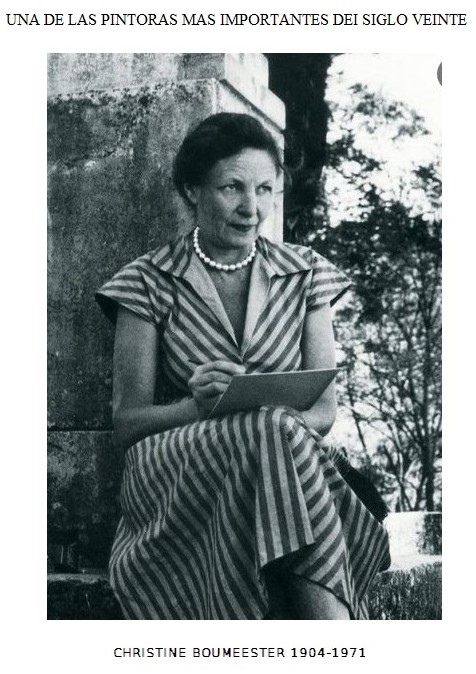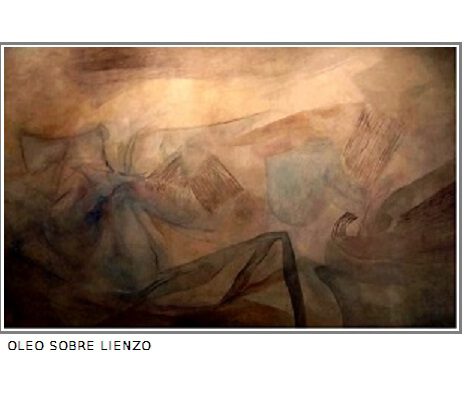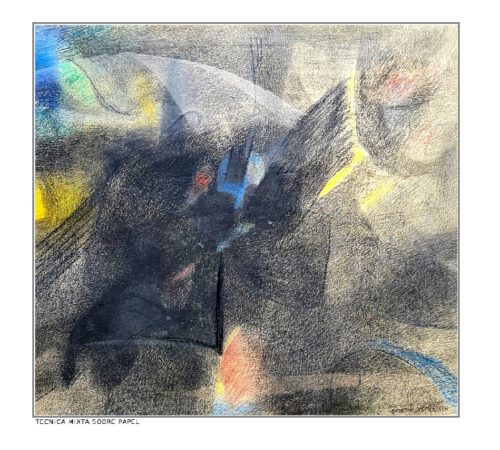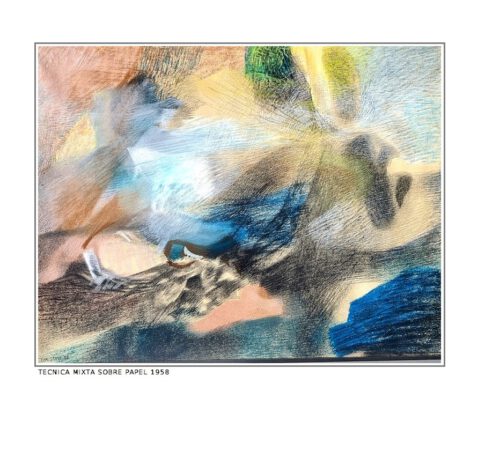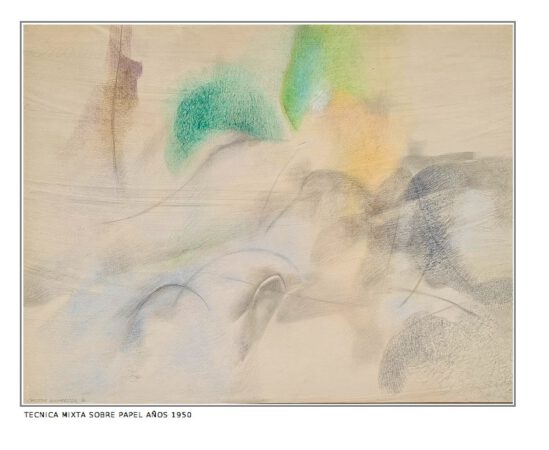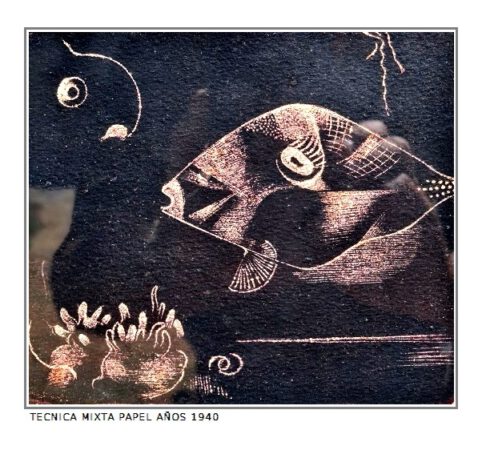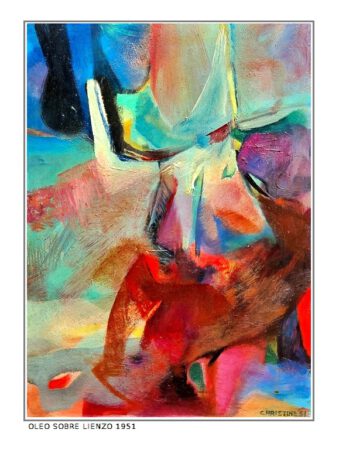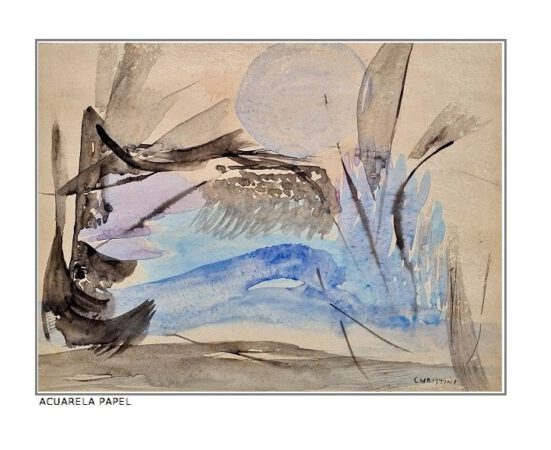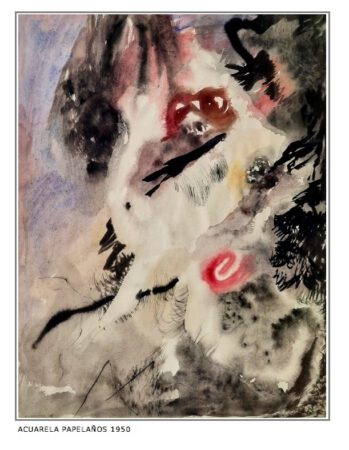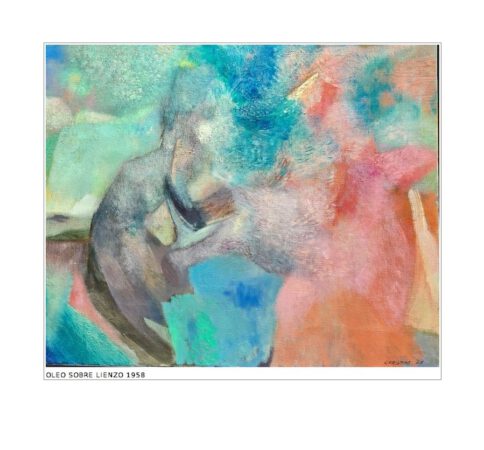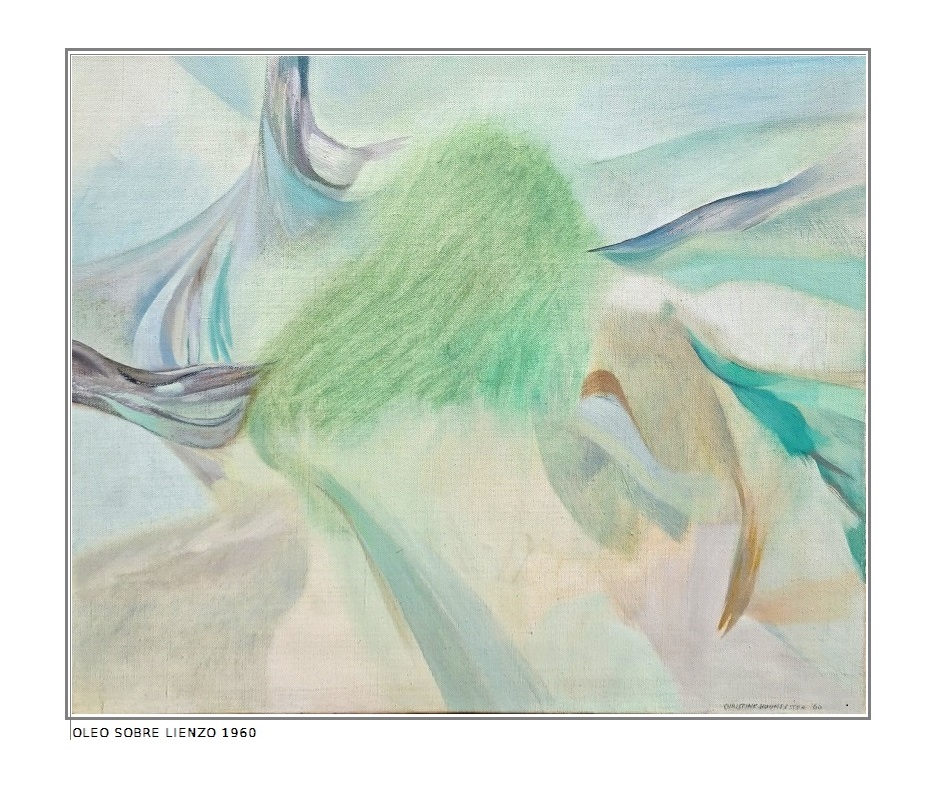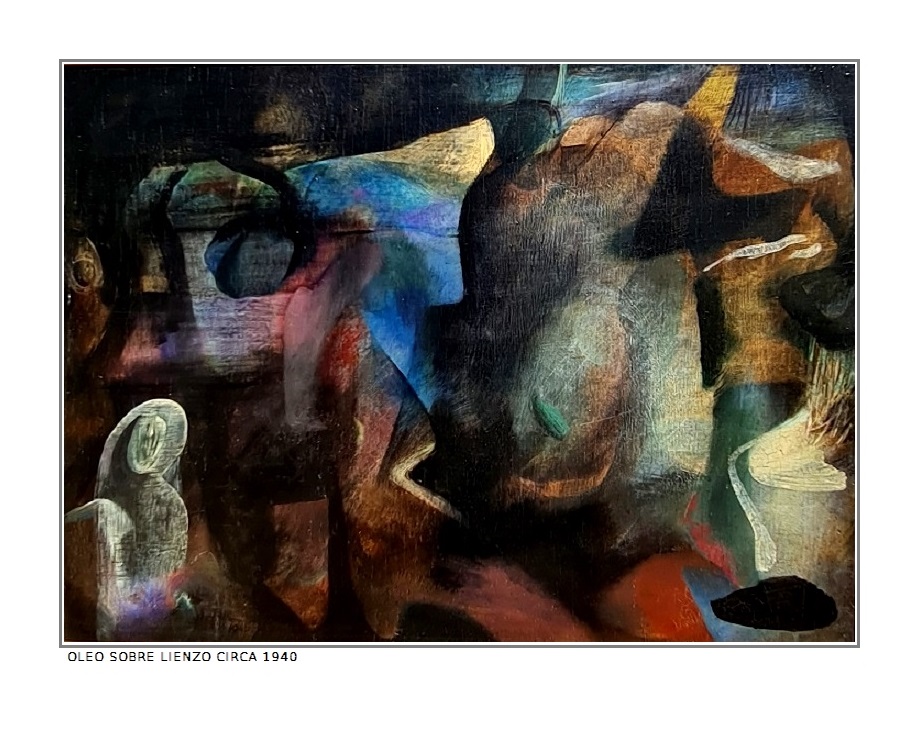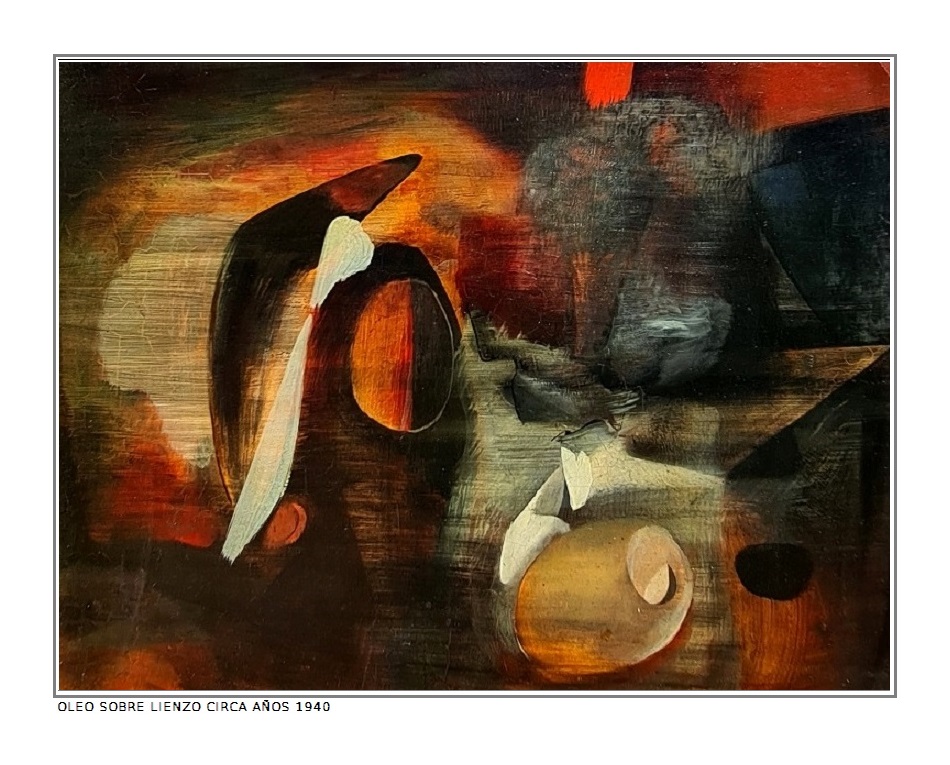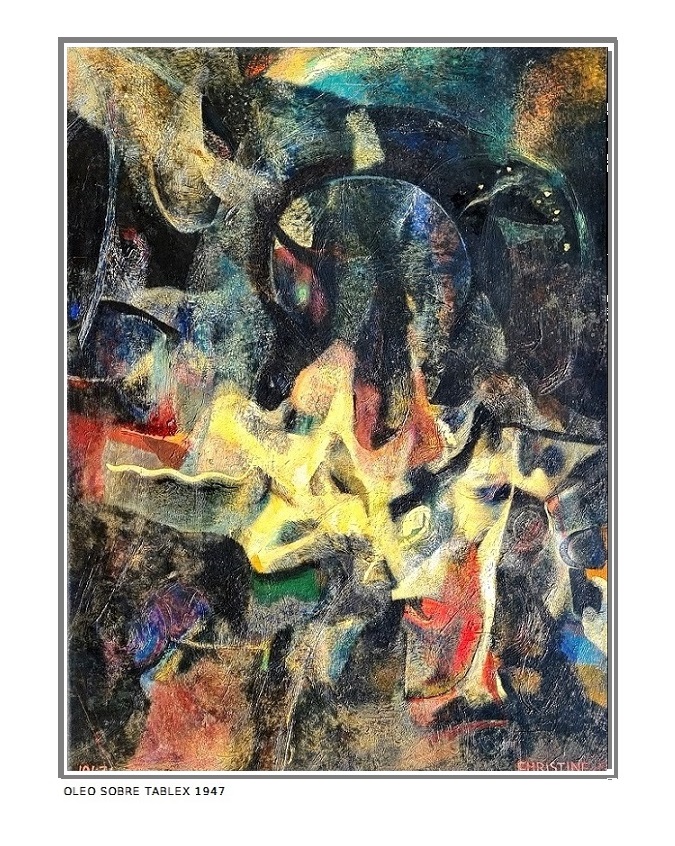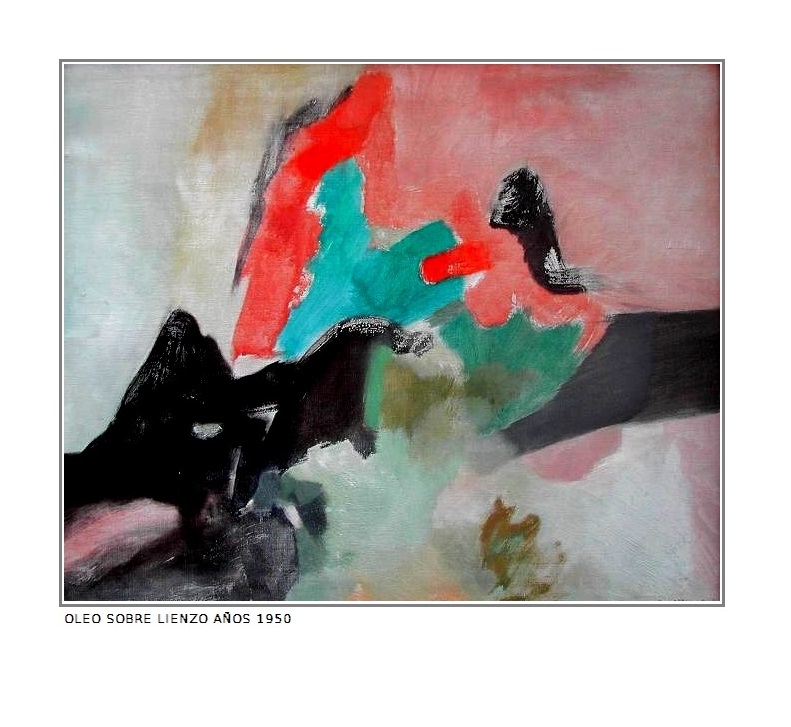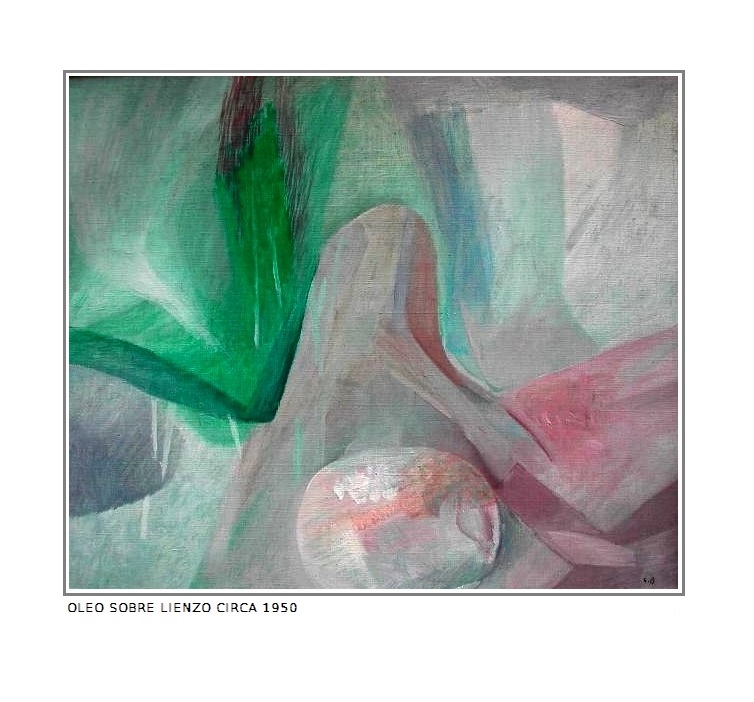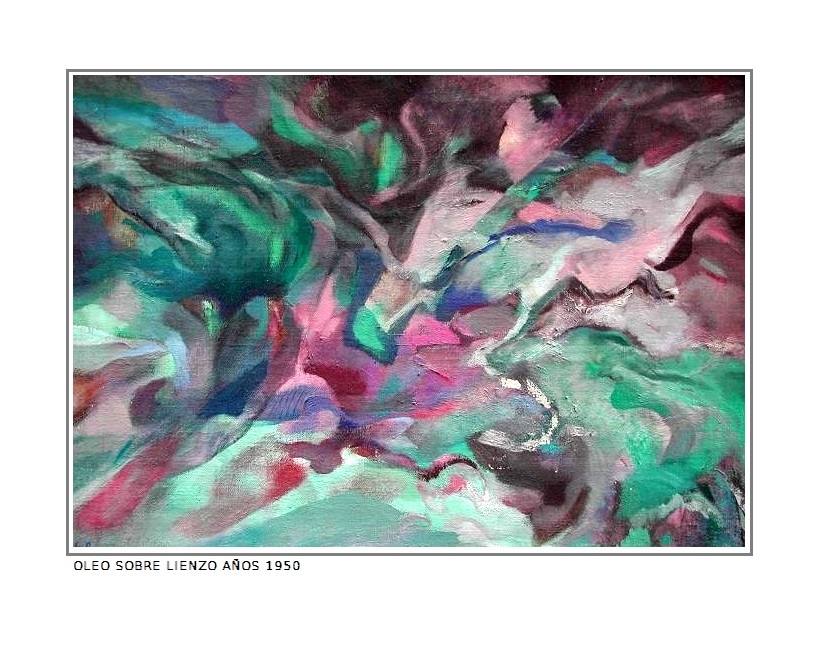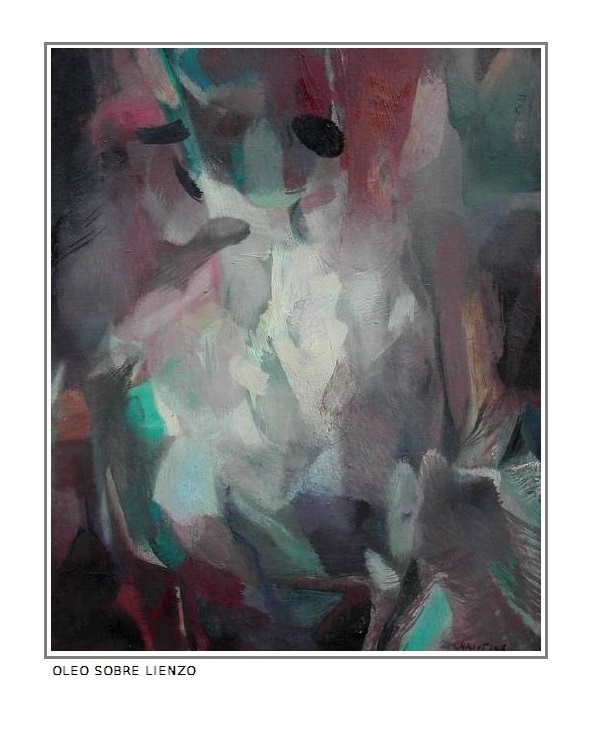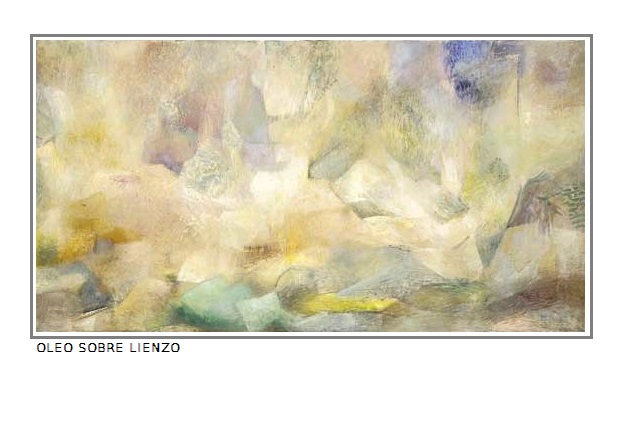Óleo sobre lienzo
Técnica mixta sobre papel
Técnica mixta sobre papel (1958)
Técnica mixta sobre papel (1950)
Técnica mixta sobre papel (1940)
Óleo sobre lienzo (1951)
Acuarela papel
Acuarela papelaños (1950)
Óleo sobre lienzo (1958)
Grafito papel
Óleo sobre lienzo (1960)
Óleo sobre lienzo circa (1940)
Óleo sobre lienzo circa (1940)
Óleo sobre tablex (1947)
Óleo sobre lienzo (1950)
Óleo sobre lienzo circa (1950)
Óleo sobre lienzo (1950)
Óleo sobre lienzo
Óleo sobre lienzo
Christine Boumeester
Christine Boumeester — AWARE Mujeres artistas / Mujeres artistas
Desde un estilo fantástico similar al de los surrealistas hasta la abstracción lírica, la obra de Christine Boumeester siempre tuvo una relación muy libre con los movimientos artísticos de su tiempo. Nacida en una familia de colonos, comenzó a dibujar desde muy joven, sin duda para distraerse de su furunculosis facial, una enfermedad que la atacó en sus primeros años. Se graduó como profesora de dibujo en la Royal Academy of Art de La Haya en 1925, pero no estaba muy interesada en la enseñanza; en cambio, montó un taller y trabajó bajo la dirección del pintor Reuter. Durante varios viajes, a Domburg, un pequeño balneario en el norte de Holanda, a la isla de Texel y a Alemania, pintó varios paisajes y retratos, a veces miniaturas sobre marfil. En su cuaderno escribió: “Cuando hacía retratos,Le Cahier de Christine Boumeester [Los cuadernos de Christine Boumeester] 1977, 1988). En 1935, la Santee Landwer Gallery de Ámsterdam fue el lugar de su primera exposición individual. Tras matricularse en la Académie de la Grande Chaumière de París, conoció al pintor estadounidense Henri Goetz, con quien se casaría seis meses después. Expuso en varias galerías de París, así como en el Salon des Superindépendants, donde mostró su trabajo todos los años hasta 1938. En 1936 creó sus primeros lienzos surrealistas: paisajes fantásticos, atmosféricos y collages de inspiración surrealista, una práctica que desarrollaría. aún más cuando la guerra redujo considerablemente sus medios para crear arte. En 1937 expuso con H. Goetz en la Galerie Bonaparte.
Influenciada por la obra de su amigo Hans Hartung, comenzó a orientarse hacia la pintura abstracta. A lo largo de estos años, la pareja socializó con los González y sus amigos surrealistas los Bréa, Mary Low (1912-2007), Oscar Domínguez y André Breton. Cuando estalló la guerra, la pareja no tenía papeles franceses y huyó a Dordoña, donde Boumeester se interesó por la prehistoria. Luego fueron a Carcassonne para unirse al grupo surrealista belga (Ubac, Magritte y Scutenaire). Una vez que Estados Unidos entró en guerra, los dos artistas comenzaron una vida clandestina, fabricando papeles para la Resistencia. En 1941 fundaron la revista surrealista clandestina La Main à plume[La mano que escribe] con Ubac y Dotremont. En 1942 exponen juntas en la galería Jeanne Bucher de París y coilustran el libro La Femme facile [La mujer fácil] de Georges Hugnet. Denunciados como miembros de la Resistencia, fueron obligados a vivir con nombres falsos. Con la ayuda de su galerista, huyeron a la región de Midi, donde se reencontraron con de Staël, Picabia, Arp y Magnelli. Regresaron a París en 1945 y comenzaron nuevamente a exponer regularmente en varios salones y galerías. En 1946, Alain Resnais filmó a C. Boumeester en el trabajo como parte de su serie de retratos de artistas. Este período también vio el comienzo de la estrecha amistad de Boumeester con Picabia, que duraría hasta su muerte en 1953; fue Boumeester quien restauró su gran cuadro Udnie .
En 1949, C. Boumeester y H. Goetz se naturalizaron como ciudadanos franceses. Con Flocon y Ubac fundaron el grupo Graphies, cuya primera exposición se celebró en la Galerie des Deux-Îles; al mismo tiempo se publicó una obra colectiva, À la gloire de la main [Por la gloria de la mano], con grabados de la pareja. Estos grabados también aparecieron en Inductivos (1950) de Max Clarac-Sérou. A esto le siguió, al año siguiente, el primer estudio de la obra de C. Boumeester, con textos de Gaston Bachelard, M. Clarac-Sérou, Noël Arnaud y Yaroslav Serpan. Luego siguieron una serie de exposiciones, así como proyectos de ilustración. El artista tradujo el libro Point, Ligne et Surfacede Kandinsky al francés. En 1963 se mudó con su esposo a Villefranche-sur-Mer, donde se asociaron con muchos artistas, incluidos Picasso, H. Hartung, Vieira da Silva y Zao Wou-Ki. En 1968 enfermó; H. Goetz publicó Christine Boumeester (1968) con una introducción de Vercors. Después de su muerte en 1971, hizo todo lo posible para exhibir y obtener un mayor reconocimiento del trabajo de su esposa. En 1983, Villefranche-sur-Mer pudo crear un museo que exhibiera el trabajo de los dos artistas gracias a varias donaciones. Desde la figuración hasta la abstracción, la obra de C. Boumeester está imbuida de una poderosa poesía de forma y color en obras que reúnen paisajes orientales y occidentales en composiciones radiantes y oníricas.
catalina gonnard
Traducido del francés por Anna Knight.
Del Dictionnaire universel des créatrices
— Clemence Boisante Gallery
French painter and engraver.
From a fantasy style similar to that of the surrealists to lyrical abstraction, Christine Boumeester’s work always had a very free relationship with the artistic movements of her time. Born into a family of settlers, she began drawing at a very young age, no doubt to distract herself from her facial furunculosis, a disease that attacked her in her early years. She graduated as Professor of Drawing at the Royal Academy of Art in The Hague in 1925, but she was not very interested in teaching; instead, she set up a workshop and worked under the direction of the painter Reuter. During various trips, to Domburg, a small seaside resort in the north of Holland, to the island of Texel, and to Germany, she painted various landscapes and portraits, sometimes miniatures on ivory. In her notebook he wrote: “When she made portraits, Le Cahier de Christine Boumeester [Christine Boumeester’s Notebooks] 1977, 1988). In 1935, the Santee Landwer Gallery in Amsterdam was the site of her first solo exhibition. After enrolling at the Académie de la Grande Chaumière in Paris, she met the American painter Henri Goetz, whom she would marry six months later. She exhibited in several Paris galleries, as well as the Salon des Superindépendants, where she showed her work every year until 1938. In 1936 she created her first surrealist canvases: fantastical, atmospheric landscapes and surrealist-inspired collages, a practice that she would develop. even more so when the war greatly reduced her means of creating art. In 1937 she exhibited with H. Goetz at the Galerie Bonaparte.
Influenced by the work of her friend Hans Hartung, she began to turn to abstract painting. Throughout these years, the couple socialized with the Gonzálezes and their surrealist friends the Bréas, Mary Low (1912-2007), Oscar Domínguez and André Breton. When war broke out, the couple had no French papers and fled to the Dordogne, where Boumeester became interested in prehistory. They then went to Carcassonne to join the Belgian surrealist group (Ubac, Magritte and Scutenaire). Once the United States entered the war, the two artists began a clandestine life, making paper for the Resistance. In 1941 they founded the underground surrealist magazine La Main à plume [The hand that writes] with Ubac and Dotremont. In 1942, they exhibited together at the Jeanne Bucher Gallery in Paris and co-illustrated the book La Femme facile [The Easy Woman] by Georges Hugnet. Denounced as members of the Resistance, they were forced to live under false names. With the help of their gallery owner, they fled to the Midi region, where they were reunited with de Staël, Picabia, Arp and Magnelli. They returned to Paris in 1945 and again began exhibiting regularly in various salons and galleries. In 1946, Alain Resnais filmed C. Boumeester at work as part of his series of artist portraits. This period also saw the beginning of Boumeester’s close friendship with Picabia, which would last until his death in 1953; it was Boumeester who restored the great painting of Ella Udnie.
In 1949, C. Boumeester and H. Goetz were naturalized as French citizens. With Flocon and Ubac they founded the Graphies group, whose first exhibition was held at the Galerie des Deux-Îles; at the same time a collective work, À la gloire de la main [For the Glory of the Hand], with engravings of the couple, was published. These prints also appeared in Inductive (1950) by Max Clarac-Sérou. This was followed, the following year, by the first study of the work of C. Boumeester, with texts by Gaston Bachelard, M. Clarac-Sérou, Noël Arnaud and Yaroslav Serpan. A series of exhibitions followed, as well as illustration projects. The artist translated Kandinsky’s book Point, Ligne et Surface into French. In 1963 she moved with her husband to Villefranche-sur-Mer, where they associated with many artists, including Picasso, H. Hartung, Vieira da Silva, and Zao Wou-Ki. In 1968 she fell ill; H. Goetz published Christine Boumeester (1968) with an introduction by Vercors. After his death in 1971, he did his best to exhibit and gain greater recognition for his wife’s work. In 1983, Villefranche-sur-Mer was able to create a museum exhibiting the work of the two artists thanks to various donations. From figuration to abstraction, C. Boumeester’s work is imbued with a powerful poetry of form and color in works that bring together Eastern and Western landscapes in radiant, dreamlike compositions.
katherine gonnard
Translated from the French by Anna Knight.
From the Dictionnaire universel des créatrices

